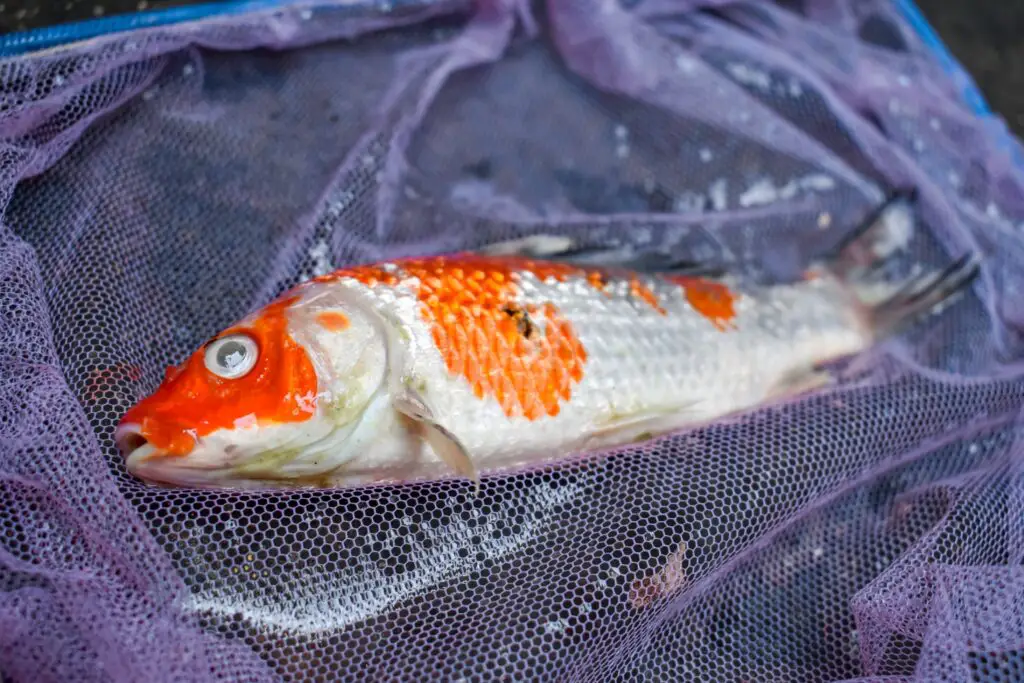
A Koi Pond is a fantastic feature in a garden property, which serves to add value to the home. Owning a Koi Pond as a hobby can become something of an obsession, and when you start learning the finer details and aiming to improve the overall excellence of the pond kit can become an all-consuming passion.
Depending on the water temperature, dead koi will rise to the surface anytime between a few hours or days after it dies. When the koi first dies, its body is heavier than the water, and it will sink, and after a while, the decomposition process will generate gasses that will make it rise.
Koi’s have a very advanced system that keeps them at the correct depth and moving through the water vertically. In its natural state, the koi is denser than water which causes it to sink to the bottom.
Pro Tip: If you’re tired of wasting money and making costly mistakes on the koi-keeping hobby or are thinking about buying koi fish but don’t know where to start, I strongly suggest you check out this ebook. I recently read this ebook, and it contains SO much useful information, such as:
- 3 proven steps to identify koi fish diseases
- WARNING: 3 things you should NEVER do when it comes to caring for koi
- When to seek professional help when it comes to looking after your koi
The Reason Koi Eventually Float After Dying
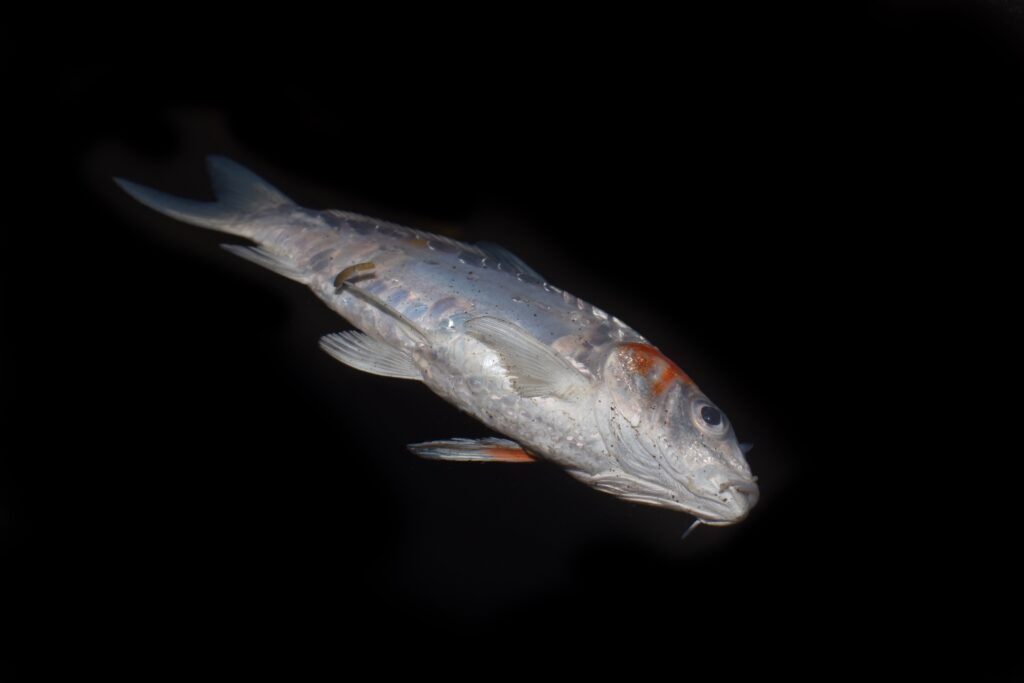
Like most living creatures, when koi die, they will inevitably sink to the bottom of the pond. The dead body floats to the surface only when the decomposition starts generating gasses.
The reasons why they float on their side are a little more complex.
Why Do Koi Stay Upright When They Swim?
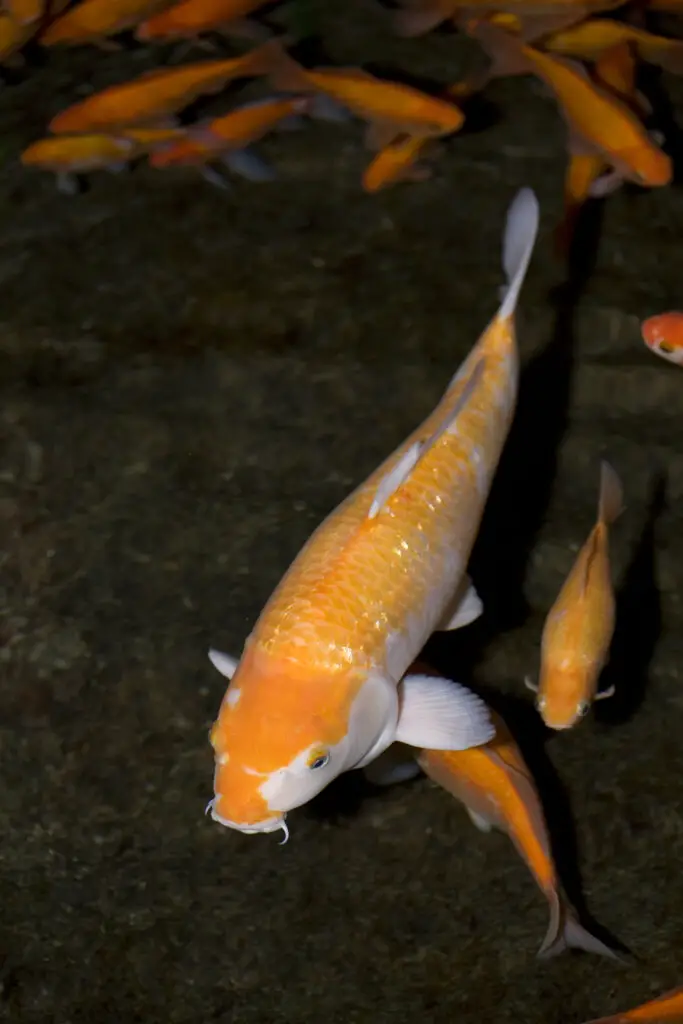
The reason a koi stays upright while they swim is interesting.
There is no apparent need to stay upright, unlike land-based mammals, which need to keep their feet firmly on the ground to push or walk; fish live in a three-dimensional space, and there is no physical need to stay upright.
Irrespective of their orientation, koi’s organs function appropriately. How the fish’s body is designed seems to orient towards vertical.
- The dorsal fin is on top.
- The nerve cord runs along the back, and its brain develops on its dorsal side to link to the nerve.
- The eyes are in the skull in the upper part of the head.
The benefits of swimming with a vertical orientation are twofold.
- Gravity helps move the blood from the brain to the heart.
- Food is kept away from the eyes by positioning them above the mouth.
While some fish, like the African catfish, swim upside down, most fish orientation is right side up.
Koi remain upright using their dorsal and anal fin.
The dorsal and anal fins control rotating movement (roll) and use them to keep the koi upright.
The koi uses its dorsal fin to control the side-to-side movement (yaw) and keep the fish pointing in the right direction.
When something is wrong with the koi, the use of the dorsal and anal fins becomes weaker, preventing it from staying perfectly vertical.
How Do Koi Rise Or Sink In Water?
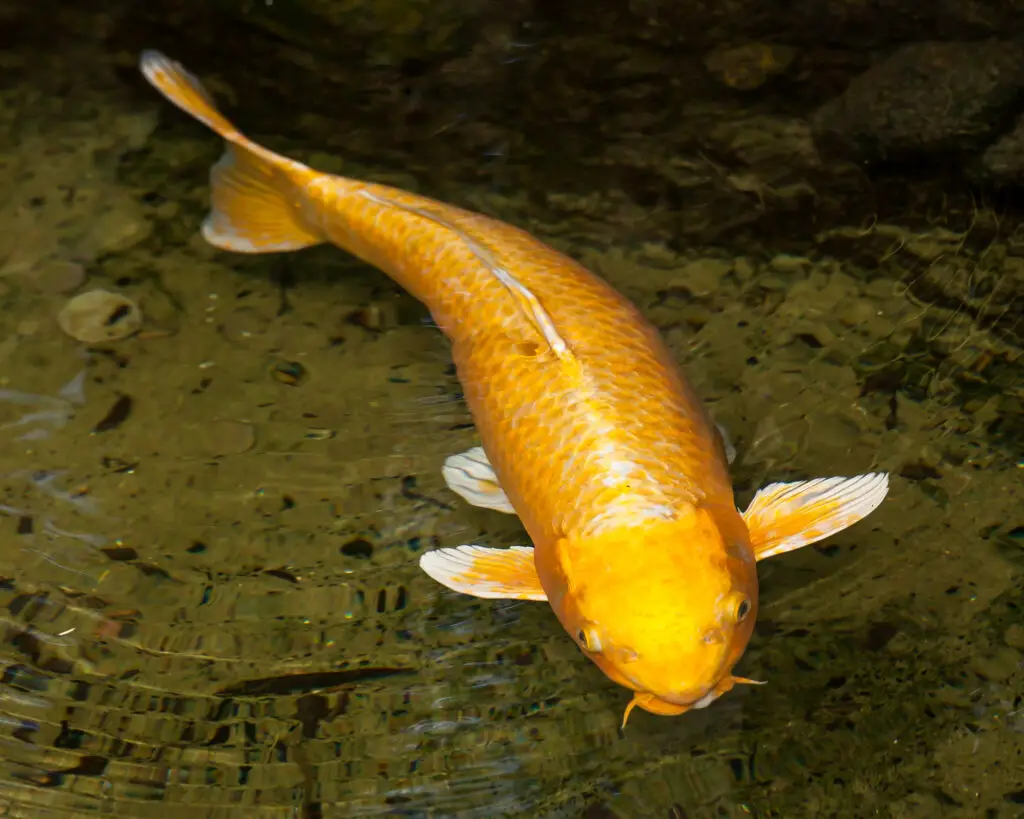
Fish are subject to two forces that make them rise or sink.
- Gravity makes them sink.
- Buoyancy makes them rise.
Living fish control these two forces using a clever buoyancy system, similar to submarines or the buoyancy converters used by scuba divers, which keeps them swimming in the correct profile.
If the fish needs to rise in the water, it must be able to reduce its “weight” without increasing its size. Koi has an expandable sac, similar to a human lung, called a “swim bladder, gas bladder, fish maw, or air bladder.” The fish fills the swim bladder with air collected from the water through the gills to reduce its weight.
As more air is consumed, the fish reduces its density, making it lighter, and so it starts to rise to the surface naturally.
Likewise, when the fish needs to swim at a deeper depth, it expels air from the swim bladder, and its weight, relative to its size, increases, so it sinks.
When the fish needs to swim at a specific depth, it only fills enough air into the bladder, displacing the same amount of water as it weighs.
When this happens, the upward buoyancy force and the downward force of gravity are equal, and the fish stays at that level.
When fish die, this system stops functioning; the swim bladder fills with water, and the dead body of the fish sinks.
How Can You Tell If The Koi Is Sick?
There are several signals that all is not well in the Koi Pond. When something goes wrong, the koi may float aimlessly, sink, swim upside down, or have other abnormal swimming problems.
- One of the very first signs that something is wrong with the koi is a change in the fish’s orientation in the water.
- The fish seems to be swimming without moving forward.
- Loss of appetite.
- Sluggish and lack of energy.
- Infections, sores, or bleeding spots in the koi.
- The fish develop distended abdomens.
- Protruding scales around the swollen area on the koi.
- The koi breathe rapidly or gasp at the surface of the water.
- The koi behaves strangely.
- The koi seem to be scratching themselves on the sides of the pond.
- White salt-like spots appear on the body of the koi.
- The koi clamp their fins.
The problem may be caused by.
- Being constipated (yes, even fish are affected by this uncomfortable condition)
- The koi being infected by worms
- The fish are stressed, often if the water is at the wrong temperature
- The fish has a bacterial infection.
- There may be a fungus caused by poor water quality, large amounts of decomposing material in the pond, or when other fish are suffering from an injury or another illness
If your koi experience any of these symptoms, you should seek help diagnosing them. Most problems are treatable if they are caught soon enough.
How Can You Tell If The Koi Is Dead?
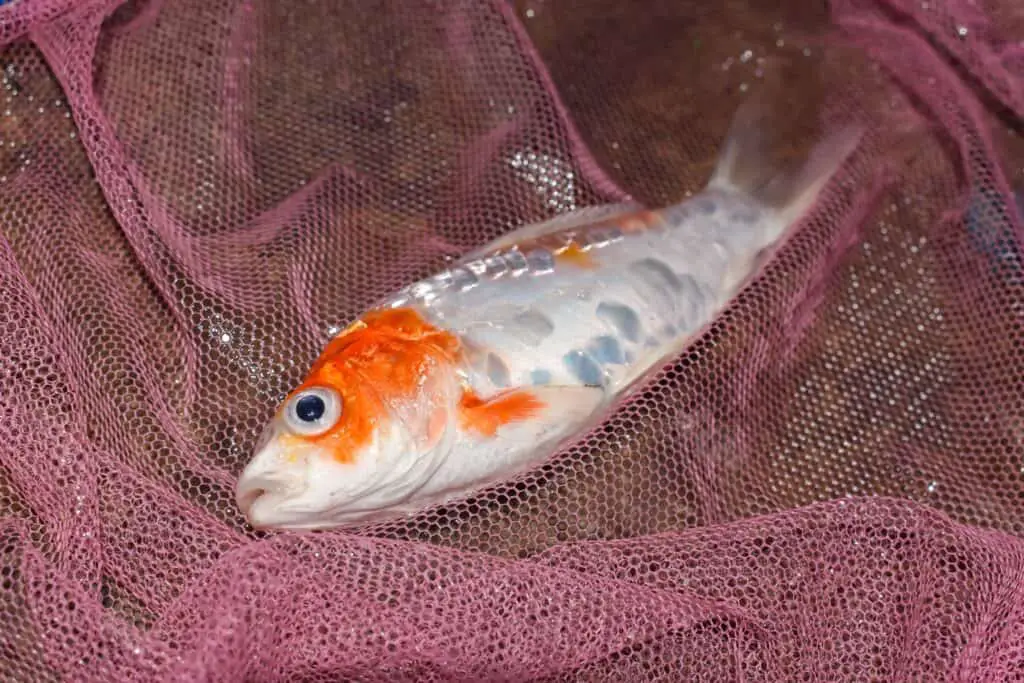
Check for the following before you dispose of fish that you believe to be dead.
To ensure the fish is dead, carry out the following simple steps.
- Scoop the fish out in a net.
- Check the gills for breathing; the fish is dead if the gills are not moving.
- Check the fish’s eyes. Look at the eye as a whole. If they’re sunken, your fish is dead or near death. Look for cloudy pupils, which is also a sign of death in most aquarium fish.
- A dead koi will often have a milky white film over its whole body, especially its eyes; this will be more pronounced the longer the fish has been deceased. It is a sign that the dead fish is beginning to decay.
Conclusion
Koi do float to the surface a little time after death takes place. The first action that happens when a Koi dies is that the koi sink to the bottom of the pond, and then after a while, decomposition starts to occur, and this process generates gas, which eventually causes the fish to float to the surface.
You must check the koi’s condition, and if you notice something that is not right, check it out and try to find the cause. It will enable you to start treatment before it becomes a severe problem.
References
https://theconversation.com/curious-kids-how-do-fish-sleep-126018
https://www.avma.org/resources/pet-owners/petcare/got-sick-fish.


